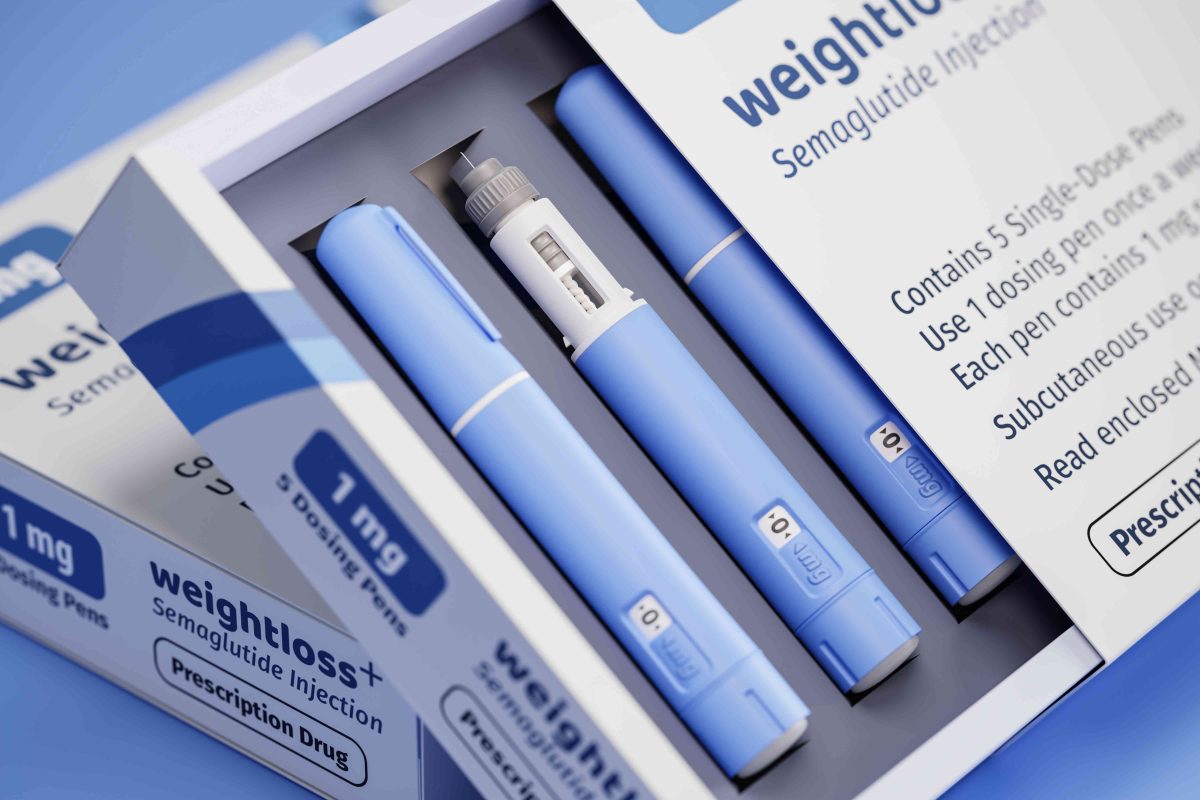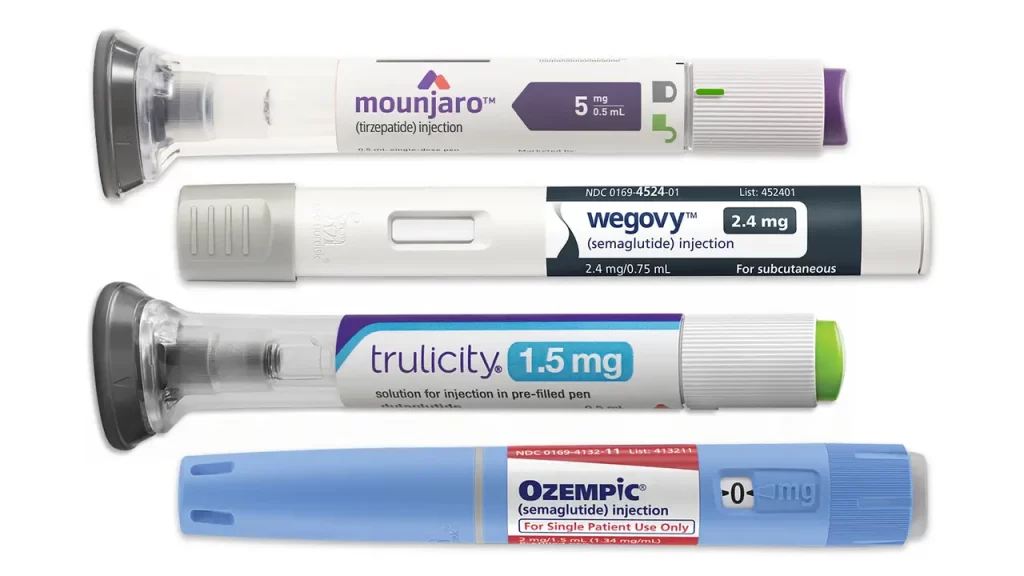Key Takeaways
-
Metabolic monitoring during body sculpting is critical for safety and efficacy, as it allows for the tracking of physiological changes and guides treatment modifications.
-
Testing important metabolic markers like resting metabolic rate, lipid profiles and glucose levels can give great insight into your health and treatment progress.
-
Personalized treatment plans that account for unique metabolic profiles, lifestyle, and ongoing monitoring result in better patient outcomes and reduced risk.
-
Pairing body sculpting with nutritious eating and fit lifestyles helps metabolic recovery and long-term wellness, not just the aesthetics.
-
Metabolic monitoring during and after the procedure enables immediate feedback, data-driven choices, and ongoing optimization of body sculpting treatment.
-
By prioritizing metabolic health, rather than quick fixes, you set yourself up for continued benefits and inspire behavioral changes that support a healthy lifestyle.
Metabolic monitoring during body sculpting means checking how the body uses energy while shaping muscles or reducing fat. It monitors shifts in metabolism, demonstrating how quickly one’s body converts calories and utilizes nutrients. Health experts use relatively straightforward tools, such as body scans or blood tests, to track these changes. Real-time data provides comprehensive insight into your progress, allowing you to identify patterns or concerns quickly. Folks can leverage these insights to adjust their nutrition or exercise for optimal results. The technique applies to just about any objective, from fat loss to muscle building. To remain safe and experience consistent gains, understanding what’s going on inside your body is relevant. The next shares tools, tips and what to expect from this process.
The Metabolic Connection
Metabolic monitoring while body sculpting is more than just shaping the body. Monitoring metabolic shifts assists in exposing how fat loss impacts health, vitality and well-being. Monitoring contributes to patient safety and sustained outcomes.
Beyond Aesthetics
Body sculpting is about more than appearance. It can influence the entire body, including heart and sugar levels. Visceral fat, aka deep belly fat – dropping it can reduce inflammation and boost insulin’s effectiveness. Even a modest weight loss, around 2.8 kilos, relieves the body and mind. Psychologically, it makes people feel better about themselves, and this mood booster can be sustained if they maintain healthy habits. Still, these gains will dissipate if the old habits return. To maintain the transformations, consistent exercise and proper nutrition are required. Fat loss accelerates metabolism, but this too can decelerate with time.
The Body’s Response
Post fat reduction treatments, the body responds in numerous directions. In the initial months, leptin, a hormone that regulates appetite, could decline. That can translate into improved fat and sugar in the blood. The body compensates with energy, sometimes making it more difficult to continue losing fat. In recovery, what you consume and how active you are will influence these adaptations. Eating clean around your meals and remaining active promotes even better results. Hormones such as insulin and adiponectin shift, which can alter fat metabolism. These swings can impact cholesterol and other health-related markers.
Safety and Efficacy
Metabolic monitoring makes body sculpting safe. By monitoring body markers, physicians can identify issues early on. This enables them to select the optimal fat loss approach for individual. Non-surgical alternatives, including fat freezing or heating, have delivered impressive results. For instance, research reports fatty tissue can shrink by as much as 3 cm and remain that reduced for years. There could be dangers, like blood sugar or fat rollercoasters. Other benefits do not persist unless new habits hold.
-
Safety protocols in metabolic monitoring:.* Test glucose and insulin pre and post therapy. * Monitor cholesterol, triglycerides and other fat indicators. * Be on the lookout for hormone changes such as leptin and adiponectin. * Employ routine check-ins to catch last-minute adjustments
Key Metabolic Markers
Metabolic monitoring during body sculpting targets key markers that demonstrate how the body responds to treatments and lifestyle interventions. Knowing these markers keeps you on track with safe, effective fat loss and muscle gaining plans. Following a few markers in combination provides a more comprehensive image than depending on only one.
|
Marker |
What It Shows |
Why It Matters |
|---|---|---|
|
Resting Metabolic Rate |
Calories burned at rest |
Helps set energy needs and goals |
|
Body Composition |
Fat mass vs. muscle mass |
Measures progress and health risks |
|
Lipid Profile |
Cholesterol and triglyceride levels |
Links to heart and metabolic health |
|
Glucose & Insulin |
Blood sugar and insulin function |
Shows risk for diabetes, fat loss |
|
Inflammatory Markers |
Body’s inflammation status |
Affects recovery, fat metabolism |
|
Adiponectin |
Insulin sensitivity, fat distribution |
Low in diabetes, high is protective |
|
Leptin |
Appetite and energy balance |
Sensitive to metabolic syndrome |
|
Ghrelin |
Hunger hormone |
Drops with more metabolic issues |
|
PAI-1 |
Clotting, inflammation |
Rises with disease and inflammation |
|
OxLDL |
Oxidized bad cholesterol |
High in metabolic syndrome |
1. Resting Metabolic Rate
RMR illustrates the amount of energy you burn while at rest. It’s a starting point for establishing calorie requirements when body sculpting. If RMR declines, weight loss can stall. Following RMR assists in establishing safe goals for calories and can demonstrate if the body is compensating for fat loss or muscle building efforts. For instance, someone whose RMR drops precipitously during a program may need to tweak their food or activity so results don’t plateau.
2. Body Composition
Body composition breaks down weight into fat, muscle, and bone. It’s more practical than simply monitoring weight because two individuals can weigh the same and be in completely different levels of health. Tracking fat and muscle mass changes informs them if they’re losing fat, gaining muscle, or both. Good body composition sustains greater RMR and a superior metabolic profile.
A body comp scan can reveal whether someone’s plan is effective, or should be adjusted. For instance, if muscle mass decreases in tandem with fat, protein intake or training could have to adjust.
3. Lipid Profile
A lipid profile tests cholesterol and triglycerides, which are associated with heart health. Post-sculpting, a couple of notches in the triglycerides or LDL cholesterol is a good omen. OxLDL, a form of cholesterol associated with metabolic syndrome, might fall with fat loss. Healthy lipid profile helps lower heart and metabolic risks.
Modifying nutrition according to lipid results can make fat loss safer and more efficient. High LDL, for instance, could translate to adding more fiber or reducing saturated fat.
4. Glucose and Insulin
Blood sugar and insulin indicate how well the body deals with carbs. High fasting glucose or insulin can indicate insulin resistance–a precursor to diabetes and blocker to fat loss. Adiponectin, which increases insulin sensitivity, tends to increase as fat decreases, particularly with 5-10% weight loss. Leptin and ghrelin, both connected to appetite and weight, fluctuate with changes in metabolic health.
5. Inflammatory Markers
Inflammatory markers, such as PAI-1, are trouble indicators for fat metabolism or healing. Elevated PAI-1 is prevalent in individuals with excessive inflammation and disease risk. Monitoring these markers can indicate whether a body sculpting plan is too intense, or if recovery requires additional assistance. Reducing inflammation with even minor weight reduction can benefit metabolic health.

Monitoring Methods
Body sculpting lacks such a clearly defined methodology for metabolic monitoring. Thoughtful monitoring informs decisions, customizes care, and optimizes outcomes.
Baseline Testing
Baseline testing establishes the groundwork for any body sculpting plan. Baseline metabolic measurements — such as resting metabolic rate, body fat percentage, and blood glucose — allow providers to understand where an individual begins and identify any potential risk factors. For instance, ultrasounds and circumference measurements are made pre-treatment. These measurements, together with photos and weigh-ins, mark a patient’s baseline.
It is key to set this baseline in order to monitor your progress. Waist circumference at the iliac crest and widest point, patient’s weight, and BMI are taken. These are your key data points for comparison down the road. With these on record, clinics can then seek for fat loss and reshaping changes, using the initial series of numbers as a baseline.
Real-Time Tracking
Real-time monitoring employs digital technologies to track metabolic shifts in the moment. Wearables—such as fitness bands or smartwatches—monitor movement, heart rate, and calorie consumption. These tools assist clinicians detect patterns and take immediate action if necessary.
During body sculpting, certain clinics will use real time feedback from these devices to modulate energy delivery or treatment parameters. This can help to prevent over- or under-treatment. Patients appreciate watching their numbers move in real time, as it boosts engagement and incentivizes healthy choices.
Real-time analysis isn’t only for the provider. When patients witness their own progress, they tend to feel more empowered and motivated. It’s a tool for collaboration and superior performance.
Post-Procedure Analysis
Post-treatment, a comprehensive analysis aids in outcome measurement and protocol refinement. Clinics will often repeat the ultrasounds, circumference checks, photos and weights at one- and three-month follow-ups. For example, demonstrate 5.2±3.1 cm abdominal circumference decreases at three months, with an average waist reduction of 3.43 cm.
In evaluating these modifications, providers look at pre/post data, usually with blinded raters. We use this data to tailor future protocols and describe advancement to patients, creating confidence.
-
Repeat all measurements at each follow-up.
-
Compare results to baseline and prior visits.
-
Review outcomes for statistical significance.
-
Discuss changes and next steps with the patient.
Personalizing Treatment
Metabolic monitoring helps personalize body sculpting plans to each individual’s lifestyle and needs, not a cookie-cutter blueprint. By understanding how a person’s body metabolizes energy, digests food, and reacts to physical activity, clinicians can select more informed therapies and implement effective interventions. This renders the road to impact smoother, safer, and more efficient for individuals from all walks.
Patient Profiling
It’s the deep patient profiles that power personalizing treatment. These profiles feature metabolic rate, body composition and genetic markers that can suggest how someone’s body may react to various diets or surgical remedies. A patient’s daily routine, stress level, and sleep have a role as well.
Lifestyle factors count every bit as much as lab numbers. For instance, an active person with an athletic occupation and a vegetarian diet will require a different treatment from a couch potato without any food preferences. By examining habits and preferences, providers can identify feasible goals and recommend modifications that integrate into daily life.
Profiling aids in risk detection. If a patient carries a genetic variation associated with slow metabolizing, this can inform safer dosing decisions and reduce the risk of adverse reactions. Keeping patients ‘in the loop’ about such discoveries fosters a sense of trust and helps keep them engaged along every step of the path.
Procedure Selection
Choosing the right body sculpting method starts with a clear look at the person’s metabolic health. Some may benefit more from non-invasive fat reduction, while others might need a surgical approach due to their body’s response to energy use.
Metabolic markers like resting energy expenditure or doubly labeled water can assist in aligning patients with the optimal procedure. The right choice can both enhance outcomes and reduce long term risks of complications.
A patient looking for a long-term healthy body, not just rapid fat loss, may gravitate toward options that help their metabolism remain stable following the procedure.
Adjusting Protocols
Treatment doesn’t end with the initial surgery. Continuous metabolic tracking enables real-time adjustments. For instance, if wearables detect blood sugar spikes following particular meals, nutrition plans can be adjusted immediately.
Patient feedback — and metabolic data — means treatment can be personalized to make it more effective. Occasionally, this entails switching up workouts or altering the makeup of protein, fat, and carbs in the diet for improved results.
Protocols are not sacred. They should flex to meet each individual’s evolving requirements — new medications, more check-ins, additional support for lifestyle changes.
Key considerations for personalizing treatment:
-
Metabolic rate and energy expenditure (assessed with metabolic carts or chambers)
-
Genetic factors that may affect weight loss
-
Cultural food preferences and daily schedule
-
Physical activity level and mobility
-
Insights from CGM or other wearable devices
-
Patient’s goals, motivation, and readiness for change
The Systemic View
Metabolic monitoring in body sculpting isn’t just about weight loss. It means viewing the entire organism as an integrated system. Each organ and hormone and process has a role in defining outcomes. As important as short-term changes are for immediate survival, so is long term health and recovery. Science indicates that changes in metabolic markers can signal whether a therapy is effective. A holistic approach examines all these moving pieces.
Hormonal Shifts
Hormones control how you store and burn fat. Estrogen, insulin, leptin, and cortisol – how these change during and after body sculpting. These changes assist or impede fat loss, muscle growth, and healing. They find a decrease in leptin and TNF-α and an increase in adiponectin following non-surgical fat removal. That translates into improved fat burning and reduced inflammation. Monitoring these shifts enables physicians to anticipate patient outcomes and identify complications in recovery. Maintaining hormone balance post-treatment preserves lifelong metabolic health.
Organ Load
Fat reduction can strain the liver, kidneys and heart. These organs metabolize fat and eliminate toxins. Monitoring blood markers and testing organ function keep patients safe. Additional burden on the liver, for instance, can imply delayed recovery or increased likelihood of adverse effects. By employing soft, non-invasive techniques and spacing treatments you can reduce this risk. Patients with previous obesity surgery still experience improvement in glucose control after body sculpting; they require special attention. Doctors need to monitor for signs of organ strain and intervene if necessary.
Long-Term Wellness
Enduring health is the objective. Non-surgical body sculpting can reduce waist size by 5.4 cm and cholesterol by 0.21 mmol/L in some studies. If you reduce insulin resistance and body fat, it can translate into better health years down the line. Others maintain the bulk of their waist loss at four years. Others might put weight back on if they abandon healthy habits. Routine checkups and small lifestyle tweaks such as daily walks and well-balanced meals can keep results on track. Regular metabolic check-ins ensure gains aren’t lost.
Metabolic Aftermath
Body sculpting induces both acute and persistent metabolic changes. These shifts do affect care, convalescence and contentment. Thoughtful metabolic tracking identifies acute dangers and facilitates more effective long-term adjustment.
Short-Term Changes
Immediately post body sculpting, some experience a reduction in weight, anywhere from 7%-14% of total body weight. Blood sugar levels can improve, with 4 out of 5 patients with elevated fasting glucose pre-surgery posting improved numbers after 6 months. Other markers such as cholesterol, triglycerides, and inflammation can shift as well, but outcomes tend to be highly individualized and depend on the patient’s baseline health status and procedure type.
It’s crucial to track these shifts. Variations in weight or body fat, for instance, can impact energy and healing. Monitoring blood sugar, lipid panel and vitals could identify early metabolic stress or prevent complications, particularly for people with metabolic syndrome. This group—accounting for almost 50% of abdominal body contouring patients—encounters increased risks, such as longer hospital stays (approximately 0.6 days additional) and elevated likelihood of all-cause or cardiac death.
Short term metabolic swings colour patients’ perception of results. Good things, such as rapid weight loss or improved blood sugars, can enhance gratification. Surprising side effects can sap recovery or set back confidence. Navigating these symptoms involves hydration, balanced nutrition, and adhering to exercise recommendations to facilitate consistent recovery.
Checklist for Managing Short-Term Metabolic Changes:
-
Monitor blood glucose and lipid levels regularly
-
Track body weight and composition weekly
-
Watch for signs of fatigue or slow wound healing
-
Maintain a nutrient-rich diet and adequate hydration
-
Follow up with healthcare providers for lab checks
Long-Term Adaptation
The body adapts to new metabolic rhythms. Patients who, post-surgery, commit to making sustainable lifestyle changes like improved nutrition and increased activity are more likely to maintain weight loss and metabolic improvements in the long term. Lasting blood sugar and cholesterol dips reduce the threat of metabolic syndrome – the graveyard of both mortality and readmittance to the hospital.
Long-term adaptation does not happen automatically. Metabolic syndrome continues to spread worldwide, impacting almost 50% of adults in certain areas. Among individuals with both metabolic syndrome and diabetes, the risk of dying was almost triple that of those with neither condition. That’s why continuing metabolic checks and lifestyle support are so important.
Conclusion
Metabolic monitoring provides actual insights into what is occurring in the body during body sculpting. Real-time checks guide treatment and detect true changes, not just what’s aesthetically pleasing on the surface. Checking your blood sugar or heart rate maintains an emphasis on health in addition to aesthetics. They get actual feedback, not just speculation, on what works for them. Every body sings a different song, so monitoring these markers makes it safe and savvy. If anyone is considering body sculpting, inquire about metabolic monitoring. Hard data and basic stats drive decisions and inform realistic goal setting. Tag your story or question to keep the conversation flowing and educate others.
Frequently Asked Questions
What is metabolic monitoring during body sculpting?
Metabolic monitoring monitors how your body expends energy during and following body sculpting. It helps make treatments safe and effective by tracking metabolic changes.
Which metabolic markers are most important to track?
Key markers include blood glucose, lipid levels, resting metabolic rate, and body composition. Monitoring these allows you to quantify advancement and risk.
How is metabolism monitored during body sculpting?
Typical techniques are blood work, indirect calorimetry and body composition scans. These offer insight into how your body reacts to the sculpting sessions.
Why personalize metabolic monitoring for body sculpting?
Personalized monitoring keeps your treatment in tune with your health. It pinpoints what’s safest and most effective for your metabolism.
What are the systemic effects of body sculpting on metabolism?
Body sculpting can affect more than just fat loss — it can influence your hormones and metabolism. Monitoring catches any systemic changes early for better results.
Can body sculpting cause long-term metabolic changes?
Certain ones get permanent metabolic alterations following their body sculpting. Monitoring helps acknowledge these shifts and provides directional after care for improved wellness.
Who should oversee metabolic monitoring during body sculpting?
Have this monitoring overseen by a qualified medical professional — a physician or metabolic specialist. Their professional experience guarantees secure and successful treatment.



















